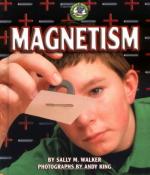|
This section contains 962 words (approx. 4 pages at 300 words per page) |

|
Magnetism has intrigued humankind for millenia. Because magnetic and magnetically susceptible objects affect each other at a distance, without being in contact with each other, the effect appears to be magical. An understanding of magnetic effects that are much more subtle than the orientation of a compass needle by the Earth's magnetic field has contributed greatly to our current concepts of chemical bonding and molecular structure.
Naturally magnetized pieces of magnetite, Fe3O4 have been known for thousands of years and for the past several hundred years sailors and explorers have used the effect of Earth's magnetic field on an iron needle to help them maintain their direction. The great advance in the understanding of magnetism that has been exploited in chemistry only occurred in the last century when physicists James Clerk Maxwell and others determined relationships that link electricity with magnetism. When Gilbert Newton Lewis convincingly demonstrated...
|
This section contains 962 words (approx. 4 pages at 300 words per page) |

|


